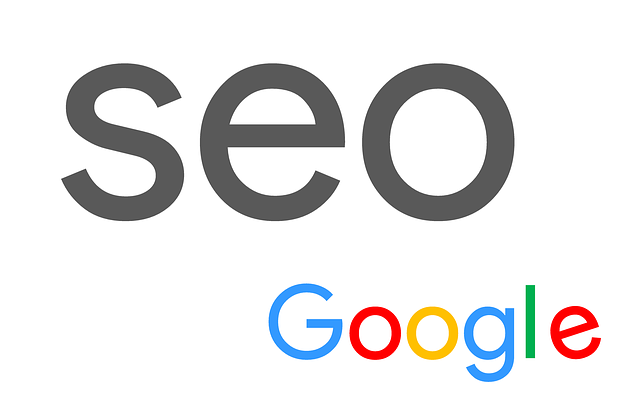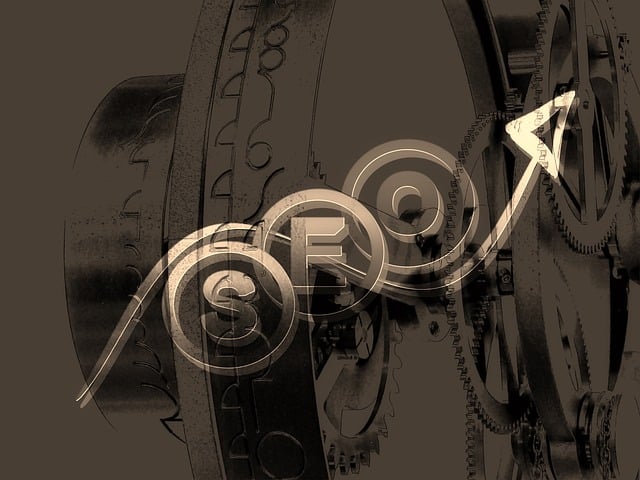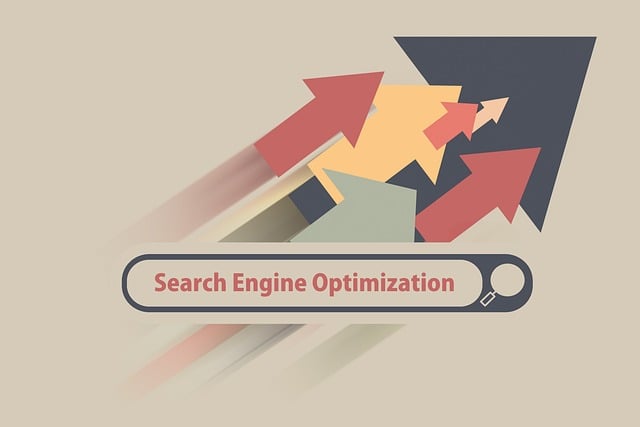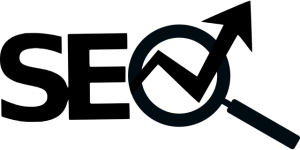SEO optimization is a multi-faceted strategy centered around enhancing online visibility through strategic keyword placement. Key steps include understanding target audience queries, using tools like Google Keyword Planner or SEMrush to identify low-competition, high-volume keywords, and naturally incorporating them into website content (headings, meta titles, descriptions). Effective strategies also involve creating valuable, readable content, optimizing title tags and meta descriptions, leveraging header tags for structure, building high-quality backlinks, regularly updating content, and tracking keyword performance with analytics tools. These SEO tips for ranking higher aim to provide a better user experience while signaling relevance to search engines, ultimately driving increased organic traffic and improved rankings.
In today’s digital landscape, understanding SEO tips for ranking higher is paramount for online visibility. This guide delves into the core strategies of keyword optimization, exploring essential techniques to elevate your website’s search engine rankings. From identifying target audience keywords through in-depth research and effective on-page implementation, to building authority through backlinks and content updates, we demystify the process, empowering you with actionable SEO tips for ranking higher.
Understanding Keyword Optimization: The Cornerstone of SEO

Keyword optimization is a fundamental strategy in search engine optimization (SEO) that involves strategically placing relevant keywords and phrases within your online content to improve visibility on search engines. It’s a process that goes beyond simply choosing popular search terms; it requires a deep understanding of your target audience, their queries, and the intent behind their searches. By integrating SEO tips for ranking higher, such as keyword research, on-page optimization, and content creation, businesses can ensure their websites appear more prominently in search results, thus attracting organic traffic.
This process begins with identifying the right keywords that align with your niche and target market. Tools like Google Keyword Planner or SEMrush can aid in uncovering high-volume, low-competition keywords. Once identified, these keywords are then woven naturally into your website’s content, meta titles, headings, and URLs to signal to search engines what your page is about. Effective keyword optimization not only boosts rankings but also enhances user experience by providing relevant, valuable information that addresses users’ queries directly.
Identifying Relevant Keywords for Your Target Audience

When optimizing your website for search engines, understanding your target audience and their language is key. SEO tips for ranking higher start with identifying relevant keywords that your ideal users are searching for. Tools like Google Keyword Planner or SEMrush can help uncover popular search terms related to your niche.
Delve into these tools to find long-tail keywords—specific phrases with lower competition that still attract a significant number of searches. Incorporating these keywords naturally throughout your content, from headings and subheadings to meta descriptions and body text, will signal to search engines that your website is a valuable resource for your target audience. Remember that the goal is not just to optimize for volume but also to connect with users who genuinely need what you offer.
Conducting a Comprehensive Keyword Research Analysis

Conducting a comprehensive keyword research analysis is a vital step in any SEO strategy aimed at ranking higher. It involves exploring and understanding the words and phrases that potential customers use when searching for products or services similar to yours. With the right tools, you can uncover valuable insights into search trends, competition levels, and user intent. This process helps identify low-hanging fruits—keywords with reasonable search volume but less competition—that can significantly boost your online visibility.
Among the many SEO tips for ranking higher, keyword research stands out as a foundational practice. By analyzing competitor strategies, tracking industry trends, and listening to customer queries, you gain a competitive edge. Incorporate these insights into your content creation, meta tags, and website structure to ensure your site resonates with both search engines and users, ultimately driving better rankings and increased organic traffic.
Incorporating Keywords into On-Page Elements Effectively

When implementing SEO tips for ranking higher, effectively incorporating keywords into on-page elements is paramount. This involves strategically placing target keywords in essential sections such as titles, meta descriptions, headers (H1, H2, etc.), and image alt tags. Each of these elements plays a crucial role in signaling to search engines what your webpage is about. For instance, using your primary keyword in the page title not only enhances readability but also tells search algorithms that the content is relevant to the user’s query.
Moreover, incorporating keywords naturally into the body text ensures that search engines can easily understand and index your content. This involves integrating keywords seamlessly into sentences and paragraphs without appearing spammy. Using varied keyword phrases related to your main topic can improve both the quality of your content and its relevance to users’ searches. Remember, SEO isn’t just about optimizing for algorithms; it’s also about creating a positive user experience, so always prioritize readability and value over keyword stuffing.
Optimizing Title Tags and Meta Descriptions for Maximum Impact

When it comes to SEO tips for ranking higher, optimizing your title tags and meta descriptions is a game-changer. These elements are among the first things search engines look at when crawling your site, making them crucial for enhancing your online visibility. A well-crafted title tag should accurately reflect the content of the page while incorporating relevant keywords naturally. Think of it as a concise advertisement for your webpage—it needs to capture attention and entice users to click.
Meta descriptions, on the other hand, provide a brief overview of what readers can expect from your content. Though not directly influential in rankings, compelling meta descriptions encourage clicks, which indirectly contributes to better search engine performance. Crafting powerful title tags and meta descriptions involves understanding your target audience’s search queries and using keywords strategically without compromising readability.
Leveraging Header Tags (H1, H2, etc.) for Search Engine Visibility

In the quest for higher search engine rankings, leveraging header tags is a powerful SEO tip that shouldn’t be overlooked. These tags – H1, H2, H3, and so on – act as signposts for both search engines and readers, signaling the hierarchy and structure of your content. The H1 tag, in particular, should include your primary keyword or phrase, representing the main topic of your page. By strategically placing these headers throughout your content, you enhance its readability while also providing valuable context to algorithms sifting through web pages.
For SEO tips for ranking higher, consider that each subsequent header (H2, H3, etc.) should introduce a new section or subtopic, further breaking down the content. This not only makes your page more scannable but also allows you to incorporate relevant keywords in a natural way. Remember, the goal is to create a structured, informative, and engaging experience for readers while ensuring your content aligns with search queries users are typing into search engines.
Building Quality Backlinks to Enhance Keyword Authority

Building quality backlinks is a powerful SEO tip for ranking higher. When high-authority websites link to your content, it signals to search engines that your site is trustworthy and relevant. This boosts your keyword authority, making your website more visible in search results. Focus on acquiring backlinks from reputable sources like industry leaders, academic institutions, or influential blogs within your niche.
Engaging in strategic outreach, creating shareable content, and earning backlinks organically are effective methods. These approaches not only enhance your site’s authority but also drive targeted traffic, ultimately contributing to improved rankings. Remember, the quality of backlinks matters more than quantity, so strive for relevance and diversity in your backlink profile.
Regularly Updating Content to Stay Relevant in Search Results

In the dynamic world of search engine optimization (SEO), staying relevant is key to maintaining and improving rankings. Regular updates to content are essential SEO tips for ranking higher, as it demonstrates to search engines that your information is current and valuable. By integrating fresh data, new insights, or revised perspectives, you signal to algorithms that your site is an authoritative source worth referencing. This not only boosts your search results but also enhances user experience by providing up-to-date, relevant content.
Additionally, regularly updating content allows you to adapt to shifts in search trends and user queries. As search engines evolve their ranking factors, incorporating new keywords or refining existing ones ensures your material remains optimized. This proactive approach not only keeps your site visible but also increases its chances of outperforming competitors who may be stagnating with outdated content.
Tracking and Analyzing Keyword Performance: Measuring Success

Tracking and analyzing keyword performance is a crucial aspect of SEO tips for ranking higher. After implementing optimization strategies, it’s essential to measure the success of your efforts. Tools like Google Analytics and Search Console provide valuable insights into how your keywords are doing. These platforms offer detailed reports on search volume, click-through rates, and rankings over time.
By regularly monitoring these metrics, you can identify high-performing keywords that drive organic traffic and optimize underperforming ones. This data-driven approach allows for continuous improvement, ensuring your content stays relevant and aligns with user search intent. Ultimately, it helps in refining your SEO strategy to achieve better rankings and engage your target audience more effectively.
